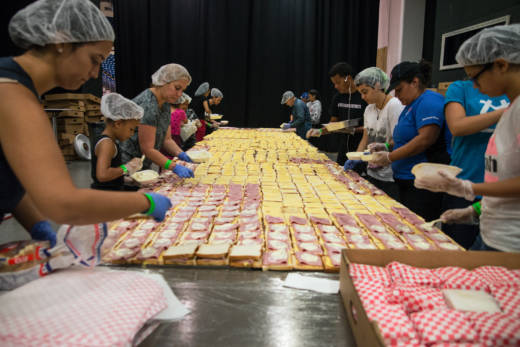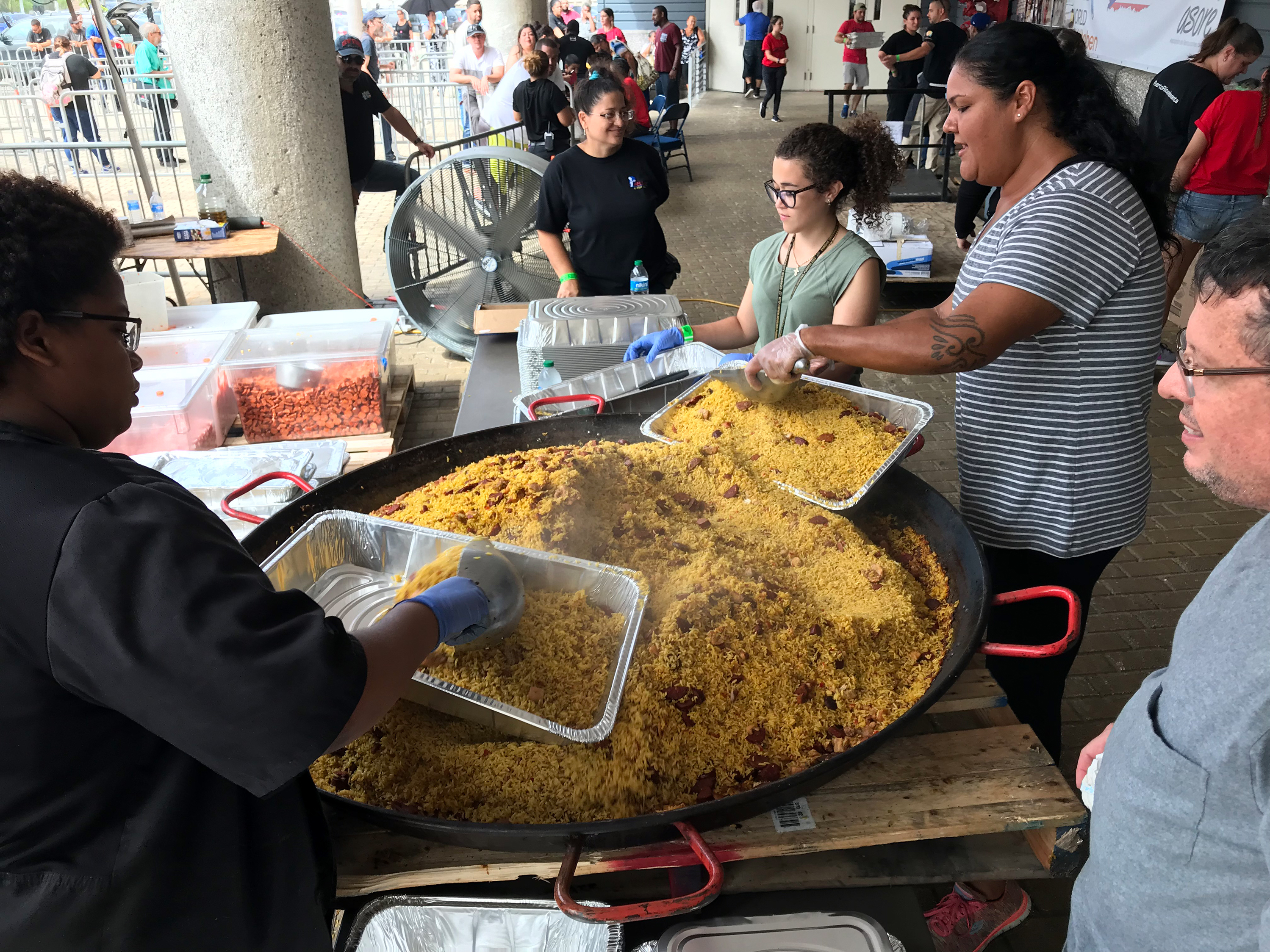Listen to the story from All Things Considered:
Chef Jose Andres Has Served Nearly 1.5 Million Meals To Hungry Puerto Ricans

Chef Jose Andres Has Served Nearly 1.5 Million Meals To Hungry Puerto Ricans
The Coliseo is the biggest concert hall in San Juan, Puerto Rico. But since Hurricane Maria devastated the island a month ago, it's become the epicenter of a massive effort to feed tens of thousands left hungry by the storm – an effort led by celebrity chef Jose Andres.
"We're about to reach the million and a half [meals] served — a vast majority of them hot meals," says Andres, who is known for his upscale restaurants in Washington, D.C., and for canceling his plans to open one in Donald Trump's D.C. hotel.
Nearly 80 percent of Puerto Rico remains without electricity. In the Coliseo, he oversees a massive makeshift kitchen. A few hundred volunteers prepare stews and sandwiches — 60,000 each day. Andres calls it "one of the most effective sandwich lines made by volunteers in history — I'm so proud of them."
On a recent visit, I watch as one volunteer, Yamil Lopez, stirs a giant paella pan – five feet in diameter. This one alone holds enough to feed 850 people. This batch, Lopez explains in Spanish, contains 12 ingredients, including "a little pork, chorizo, black beans, red beans, some***carrots." But no seafood – traditionally a featured paella ingredient.

"We call it Paella Maria, like the hurricane, because it's what we have on hand at the moment," Lopez says.
Boxes of apples and stacks of canned Goya beans line the rounded hallways of the Coliseo. Open areas are set up with long tables covered in sandwich-making supplies — bread, ham, cheese, mayonnaise. A volunteer writes the totals on a piece of poster board hanging on the wall. By the end of the day, they'll have made almost 25,000 sandwiches.
Many of the meals will be loaded on trucks for delivery to remote regions of the the island. "We have the food trucks that reach any area that sometimes have difficult access, one house here, one house there," Andres says.
Food is also available for pickup. Among those in line on this day are Zelides Enid and three of her friends. They're here to get some 300 meals to take to their neighborhood in Canóvanas, two cities over.
"Since the hurricane, we haven't gotten much help in our community, and FEMA still hasn't arrived," Enid says. She says that's why she and her friends are at the Coliseo.
When asked why he decided to fly to San Juan on Sept. 25, just days after Maria struck, Andres replies by paraphrasing the author John Steinbeck. "Steinbeck said very clearly in Of Mice and Men, "Where there is a fight so hungry people may eat, I will be there."
Andres says that's why he decided to fly to San Juan on Sept. 25, a few days after Maria struck. "I didn't see a plan and instead of planning and meeting, I began cooking and we began feeding." Soon after Andres arrived, FEMA gave his nonprofit, World Central Kitchen, enough money to prepare 20,000 meals over seven days. That's on top of the 50,000 people a day he was already feeding – with donated food and funds, in addition to money from his NGO.
When it came time for a new contract, Andres asked FEMA for increased funding so he could feed tens of thousands more Puerto Ricans, but the agency told him that would take longer because of its contracting rules.
Despite such frustrations, Andres remains indefatigable about continuing to churn out meals to help alleviate hunger in hurricane-ravaged Puerto Rico.
"Maybe it wasn't perfect," he says of World Central Kitchen's efforts in Puerto Rico, "maybe it was not organized by the rules and regulations of the federal government. But I can tell you, if you go to ask every one of those men and women that received those meals, probably they would tell you that for them the plan was good enough."
Remember those women from Canóvanas waiting with Enid? Six hours after arriving, they were still waiting for their 300 meals.
It'll still be a while, one of the women, Juana de la Cruz, says. Despite the wait, she is very grateful. This will be her only meal today.
Copyright 2017 NPR.
